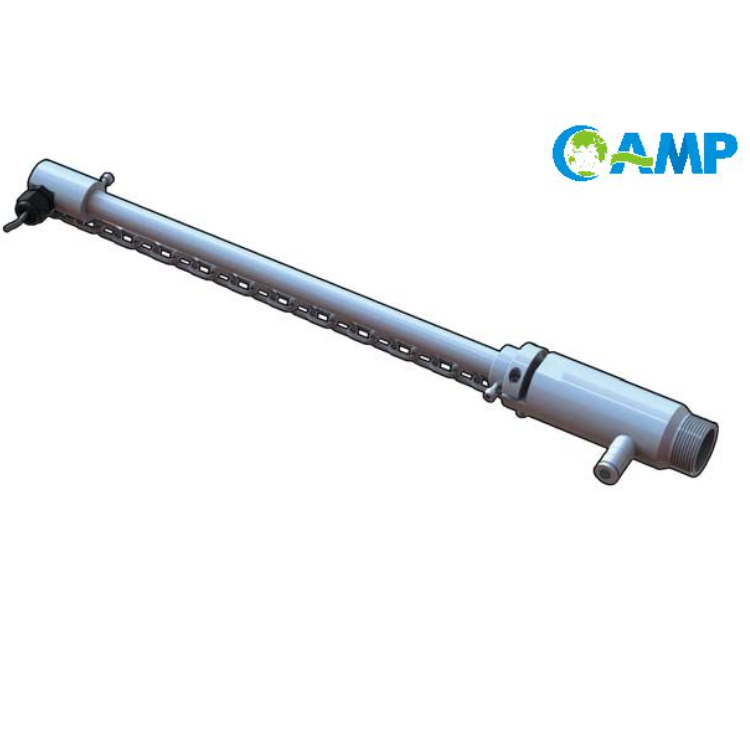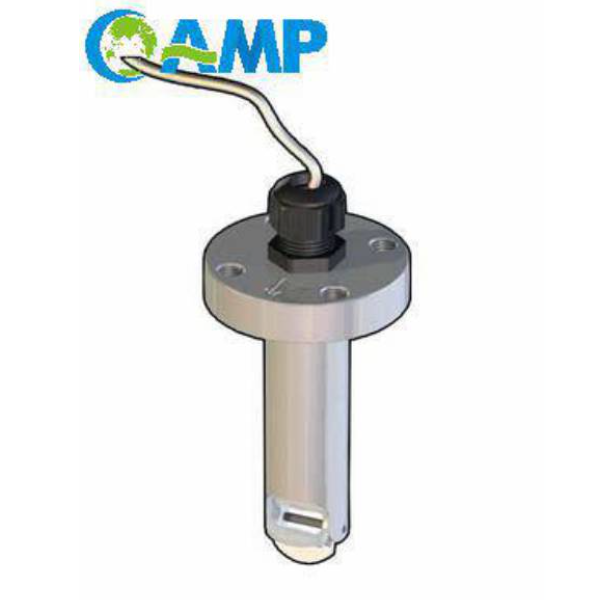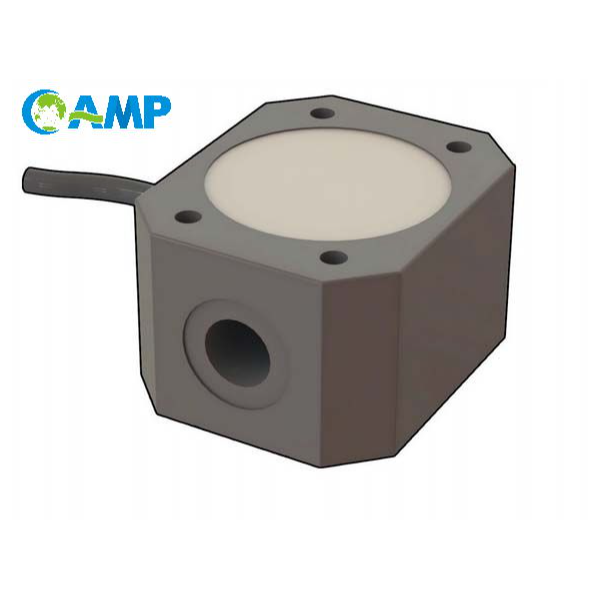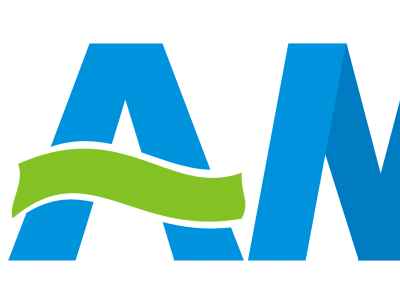-
 Chen Si
Hi there! Welcome to my shop. Let me know if you have any questions.
Chen Si
Hi there! Welcome to my shop. Let me know if you have any questions.
Your message has exceeded the limit.

How Many Types of Flow Sensors Are There?
2025-10-17 14:22:06
Knowing all types of flow sensors is essential for anyone involved in industrial, medical, or environmental applications where the accuracy of fluid flow forecasts is paramount. Flow sensors are an important part of ensuring that gases or liquids flow through a system efficiently, safely, and accurately. So, this blog will introduce you to the various kinds of flow sensors, discussing their specific functions and underlying technologies, plus when to use one versus another. You will have a relatively complete overview of these important devices and have a better understanding of the kind of flow sensor applicable to your need. Come along while we unravel this crucial element of modern systems and applications.
Introduction to Flow Sensors
Flow sensors measure the flow rate of liquids or gases through a system. They monitor the flow, convert, and transmit it into an electric signal, which then is used for system efficiency, operational conditions, or safety application. Flow sensors are important in water treatment, manufacturing, and health sectors requiring accurate flow control. They may be thermal, differential pressure, ultrasonic, etc., with each varying in suitable applications depending on accuracy, medium, and operating conditions.
Overview of Flow Sensors and Their Importance
Flow sensors, also known as flow meters, can measure the rate of flow of liquids, gases, or steam into a system. With evolving sensor technology, different flow sensors came according to specific applications. Here is a more detailed description of the most commonly used flow sensors and their attributes.
Thermal Flow Sensors
Considered to be one of the most popular ways to measure gas flow rate on the basis of heat transfer principle, thermal flow sensors measure flow by detecting the cooling imparted by the gas moving past the heated element of the sensor. Due to their responsiveness, thermal flow sensors find applications in HVAC systems, industrial process monitoring, and gas leak detection. Thermal flow mounters are one of the most accurate types of flow meters, with accuracy enabled to ±1% for many applications, according to recent industry data.
Ultrasonic Flow Sensors
By sending sound waves through the medium and recording the time difference between sending and receiving, an ultrasonic sensor calculates velocity of the waves. These sensors are ideal for both conductive and nonconductive liquids, making them very versatile in water treatment plants and chemical processing industries. Thanks to modern developments, now the operator can monitor the flow meter in real-time and achieve ±0.5% measurement accuracy, thereby making these instruments much more useful.
Differential Pressure Sensors
They determine flow rate by measuring the pressure drop across an impediment in the flow. Widely used in oil and gas pipelines, differential pressure sensors are generally sturdy and reliable. New digital integration has brought self-calibration and remote monitoring, thereby decreasing error under stable conditions to ±0.1%.
Electromagnetic Flow Sensors
Electromagnetic flow sensors use Faraday's law of electromagnetic induction to measure flow rate for conductive fluids. They are especially used in water treatment and food processing. The relatively simple design with no moving parts ensures that magmeters require minimum maintenance, therefore being the cost-effective option. Recent transformations in technology have aimed to enhance their interfacing with Internet of Things (IoT) technology, thereby enabling real-time data analysis with extreme precision.
Coriolis Flow Sensors
Coriolis meters are quite famous because of their supreme accuracy. They measure mass flow rates directly by detecting the force of deflection exerted by a flowing medium on a vibrating tube. Currently, they measure with ±0.1% accuracy of the measured value, making them abundantly suitable for fuel monitoring, pharmaceutical production, and other critical applications.
Recent Advancements and Data Trends
A global flow sensor market is forecasted to grow at a CAGR of 6.8% from 2025-2030 due to requirements for increasingly intelligent automation and precision in manufacturing. The healthcare sector is rapidly adopting ultrasonic and thermal flow sensors into medical devices for precise fluid measurements. Also, the adoption of cloud-based monitoring solutions is changing the way predictive maintenance is done, while advanced flow sensors can reduce downtime in an industry by up to 25%.
This diverse range of flow sensor technologies, supported by ongoing development, showcases how vital they are for optimizing efficiency and ensuring safety in various industrial and commercial applications.
Flow Sensor Diversity in Deployment
Flow Sensor technology has undergone several modifications, and this innovation impacts various spheres, from health and medicine to manufacturing and environmental monitoring. Recent reports project that the global flow sensor market will witness a steady compound annual growth rate (CAGR) of 6.3% from 2025 to 2030, reaching an approximate valuation of $10.2 billion by 2030. The reasons for this tremendous growth remain the demand for an accurate flow measurement system and highly precise industries.
In health care, ultrasonic flow sensors are being increasingly embraced in setting up ventilators and dialysis systems, where the precise control of fluid flow is critical. Studies indicate that the sensors could measure fluid with more than 98% accuracy, thereby contributing to patient safety and the reliability of the instruments.
Therefore, in industrial applications, thermal mass flow sensors in conjunction with IoT platforms are being utilized to obtain real-time diagnostics and predictive analytics. This has been reported to reduce downtime by up to 30% and improve the energy efficiency of systems. On the other hand, turbine flow meters with digital calibration techniques have improved their accuracy to ±0.5% of actual flow, making accuracy essential for the oil and gas and chemical processing industries.
Environmental monitoring is yet another application gaining from the latest advances in flow sensors. Water management systems are using electromagnetic flow sensors to measure large volumes of water with lower maintenance requirements. It is claimed that these sensors have enhanced the measurement capability of wastewater treatment plants by 40%, hence allowing better optimization of resources and adherence to environmental standards.
The growing importance of a data-driven world is placed on these flow sensors. The increasing use of flow sensors and their integration into sophisticated techniques like artificial intelligence (AI) and machine learning bear ample testimony to this.
Popular Types of Flow Sensors

Popular types of flow sensors would include electromagnetic flow sensors, ultrasonic flow sensors, thermal-mass flow sensors, and vortex flow sensors. Depending on the application, things like the type of fluid, the level of accuracy desired, and environmental conditions, until a particular type is selected.
Differential-Pressure Flow Sensors
Differential pressure measurements operate by sensing the pressure drop across a constriction in a flow path. As fluid goes through the constriction, a pressure difference exists between the upstream and downstream side. Hence, measuring the magnitude of this pressure difference tells us about the rate of flow and movement of the fluid. For the highest usage, they are massively chosen because of their reliability and the huge variety of applications across industries, especially for monitoring liquid and gas flow.
Thermal Flow Sensors and Its Applications
Thermal flow sensors operate by measuring the heat transferred from a heated element into the fluid moving past it. When we talk about flow rates, this heat transfer will either increase or decrease, depending upon the flow rate of the fluid; thus precise measurement is possible. Thermal flow sensors have been great in applications demanding very accurate flow measurement, with real-time monitoring; hence, they find use in HVAC, medical devices, and industrial process control. One of their advantages is their capacity to provide reliable data under different environmental conditions, hence making them preferred in many fields.
Turbine Flow Sensors-Accuracy in Liquid Flow
Turbine flow sensors measure flow rate of liquids with a rotor spinning rate proportional to the flow rate. In other words, the rotation of a shaft is detected by a pickup device, such as a magnetic type, to give a precise flow measurement. Accordingly, the sensor is suitable for applications where sensor output must be highly precise for water distribution, fuel monitoring, and chemical process, for example. A simple way to design these sensors and hence their proven measurement principle have made them a widely trusted solution for measuring flow in liquids.
Magnetic Flow Sensors for Conductive Fluids
A magnetic flow sensor operates by gauging the voltage created while a conductive fluid passes through a magnetic field. This voltage is directly proportional to the flow rate, ensuring that the instruments guarantee accurate and consistent measurements. Primarily used in applications involving conductive liquids, these instruments find uses in wastewater treatment plants, food and beverages production units, and chemical industries that demand precision and reliability.
Applications of Flow Sensors
Flow sensors are used to measure flow in applications spanning several industries. They ascertain the precision and efficiency of fluid flow measurement in industrial processes or water flow measurements in utilities. They are used in life-saving medical devices such as ventilators and in heating and ventilation systems for better energy utilization and performance.
Flow Sensors in Industrial Automation
Flow sensors are considered a major factor in industrial automation for optimizing processes concurrently and improving operational efficiency. These devices provide in fact critical process control according to the monitored flow rate of liquids, gases, or steam through a complex set of instrumentation. According to recent industry reports, the global industrial flow sensors market is expected to grow at a CAGR of nearly 6.5% from 2023 to 2030, driven by increased IoT integrations and the demand for real-time data on the shop floor.
Modern flow sensors utilize advanced techniques such as ultrasonic, electromagnetic, and thermal mass sensing mechanisms to ensure top accuracy and reliability, even that in the most rigorous environments. In the case of ultrasonic flow meters that feature multi-path sensors, readings are made even when turbulent or irregular flow occurs due to unexpected factors. Besides, the use of electromagnetic flow sensors is also gaining prominence in industries like oil & gas and water treatment, where the importance of non-invasive measurements against corrosive fluids is highly valued.
When tight process control is desired, flow sensors are integrated with Industrial Internet of Things (IIoT) platforms. Thus, real-time data is fed into the algorithms of centralized control systems and subsequently serves process applications. Hence, these systems serve predictive maintenance and minimize downtime. Thermal flow measurement in chemical processing continuously monitors flow rates to detect anomalies such as pipeline blockages or leakage, enhancing safety and efficiency. Such applications help not only in managing resources efficiently but in saving huge costs.
Usage in Medical Devices
Sensors in medical instruments have revolutionized technologies for treating patients by pinpointing, monitoring, and diagnosing them efficiently. For example, wearable medical sensors such as ECG monitors or glucose monitors track pointsand provide real-time data to physicians so that they may make informed decisions from a distance. The wearable medical device market was worth $21.3 billion in 2022 and is projected to grow to $49.7 billion by 2030, with a CAGR of 11.2% between 2023 and 2030.
These include sensors such as photoplethysmography (PPG) for heart rate monitoring and continuous glucose monitoring (CGM), which employs electrochemical sensors. The addition of MEMS (Micro-Electro-Mechanical Systems) Technology also allows for the development of ultra-compact, energy-efficient devices, potentially decreasing patient recovery time and increasing the duration of wear.
Diagnostic imaging sensors, such as flat-panel detectors for digital X-rays or piezoelectric transducers for ultrasounds, significantly improve image quality while simultaneously decreasing radiation exposure. In advancing the quality of care for patients, these technologies present new working propositions for the hospital, thereby lessening operational costs. The continuous ultra-evolution of sensor technologies constantly challenges what is achievable in modern medicine, thus influencing healthcare from a personal arena to an interhospital arena.
Environmental Monitoring with Flow Sensors
Flow measurement plays a vital role in environmental monitoring, allowing the determination of flow rates for liquids and gases across various processes. The sensors are of great importance in water management wherein rivers are gauged for flow, wastewater quantified for discharge volumes into rivers, and water used in homes and industries are measured to confirm compliance on licensing or to allocate resources. Global water usage, according to recent industry statistics, is said to have increased by almost 1% per annum, since 1980, thus clearly showing why the integration of high-quality flow sensors in water infrastructures must be of paramount urgency.
The design and execution of advanced flow sensors consider several factors, such as achieving real-time data acquisition with minimal maintenance and high accuracy levels. For instance, ultrasonic flow sensors measure flow rates with an error margin as low as ±0.5%, hence, they are selected for high-precision environmental applications. This is especially relevant with groundwater depletion. To sustain water extraction strategies, precise monitoring is necessary.
Adding to that, IoT technologies have further extended the capabilities of flow sensors by allowing remote readouts and predictive maintenance through cloud-connected systems. New generation systems can transmit live data streams to central dashboards, where further analyzing of AI algorithms for anomaly detection and performance optimization can take place. The global market for environmental-monitoring flow sensors is forecasted to hit $9.82 billion by 2030, thereby strengthening the position these sensors are gaining amidst the fight against environmental challenges. This underlines how flow sensor–based data-drive insights are taking center stage in developing sustainable solutions for various ecosystems.
Automotive Application of Flow Sensors
Flow sensors are very important in present-day automotive systems, in order to accurately observe and regulate the flow of fluids inside diverse subsystems. They are involved in taking control over fuel efficiency, engine performance, and emission control. For instance, a mass flow for air (MAF) sensor in one type of flow sensor measures the air entering into the engine, which permits the engine control unit (ECU) to vary the air-fuel ratio, thereby ensuring the even better formation of heat and lessening of pollutant emission.
As described by the most recent data provided by market analysis, the global automotive flow sensor market was valued around $3.5 billion in 2022, with an expected CAGR of 6.8% from 2023 to 2030. The growth is spurred by growing demand for EV and ADAS, wherein flow sensors are employed in the cooling system, battery fluids, and air conditioning subsystems. On the other hand, advances in miniaturization and IoT integration have made modern flow sensors very reliable trends: they are compact and consume low power, thereby fostering their acceptance in the automotive sector.
With the development of flow sensors combined with AI-based analytics, predictive maintenance has also arisen. The flow sensors give data that is being collected in real-time, by which potential problems, such as a blockage or leakage, are diagnosed before they ripen into a failure, thus hardly ever leading to downtime or maintenance costs for the vehicle.
Factors to Consider When Choosing a Flow Sensor

When selecting a flow sensor, I consider several important factors to ensure proper performance and compatibility. These include the type of fluid or gas being measured, the required measurement accuracy, and the operating temperature and pressure ranges. The response time of the sensor, its installation method, and integration with existing systems are also evaluated by me. Moreover, I emphasize the environmental conditions, maintenance needs, and cost-effectiveness of the application.
Type of Fluid: Liquid or Gas
Because it can be either liquid or gas, the fluid influences the sensor's choice. For liquids, sensors usually consider changes in density and viscosity, whereas for gases, they account for factors such as compressibility and flow conditions. That clearly sort of justifies why selecting the right sensor makes measurements precise and the sensor standing good to the test of specifications and prevailing conditions.
Required Accuracy and Measurement Range
If the sensor is to perform very well, this incompatibility between the sensor materials, design period to the working environment has to be taken into consideration. Temperature, pressure, and the presence of corrosive agents must be factored in. In other words, if the working environment is hot, heat-resistant sensors should be chosen, and if the environment is corrosive, sensors with corrosion-resistant coatings should be considered. This compatibility will prevent the sensors from degrading over time and will also maintain the accuracy of the measurements.
Environmental Factors Affecting Flow Sensors
Being installed in the field, flow sensors have undergone certain improvement attempts, especially to make them more durable, accurate, and adaptable to temperature and environmental conditions. For example, in some cases, ultrasonic flow sensors, which measure velocity using sound waves, have been improved. According to market data, ultrasonic flow meters can now achieve accuracy up to ±0.5% when conditions are ideal and in high demand in oil and gas, water management, and chemical processing industries, just to mention a few.
Earlier, magnetic flow meters, used for conductive liquids, used to be equipped with linings made of glass or rubber. Today, they are being equipped with advanced linings like PTFE (polytetrafluoroethylene) and ceramic for extreme corrosion and abrasion resistance in harsh environments. It is reported that the global market for magnetic flow meters is expected to record a CAGR of 5.5% between 2023 and 2030, with increased demand in the wastewater treatment and food processing industries.
Temperature compensation remains another one of the very important features in modern flow sensors to be able to be reliably functioning in varying thermal environments. Sensors equipped with integrated temperature sensors, for example, could achieve consistent readings across operating ranges from -40°F to 500°F, depending on the material and design specifications.
Furthermore, these arrangements increase the shelf life of numerous types of flow sensors while giving the industry the proper tools to optimize processes, reduce waste, and improve energy efficiency.
Conclusion
The first step in my approach to assessing whether the sensor is suitable for an application is by considering the nature of the fluid to be measured, whether it is liquid or gas, and its accuracy and range requirements. I also look into temperature, pressure, corrosive conditions, and other environmental factors. This all-around check allows me to ensure that the chosen flow sensor is accurate, sustainable, and apt for the intended application.
Flow Sensor The Brief
Flow sensors have witnessed rapid advances in technology in recent years, thanks in part to the burgeoning demand for ultra-high accuracy and application-specific measurability. Recent data suggest that ultrasonic flow sensors find increased usage in industries wherein non-invasive measurements are preferred such as medical and food processing applications. They measure the velocity of a liquid or gas flow using high-frequency sound waves, maintaining an accuracy of ±0.5% under good conditions.
Besides, thermal flow sensors became famous in HVAC because of their reliability and efficiency in measuring low gas velocities. Recent studies revealed that thermal flow sensors, operating in a temperature range of about -40°C to 125°C with an almost one-second response time, would be a valuable technological advancement for dynamic applications. Meanwhile, the Coriolis flow sensors remain the best choice for those industries requiring absolute precision and have an accuracy of almost 0.1%. They measure mass flow directly, which is very useful for devices used in chemical processing or petroleum refining, where accurate dosages are crucial.
Recent studies emphasize the increasingly pervasive integration of IoT technology into flow sensors, enabling applications such as real-time monitoring, data logging, and predictive maintenance. Market analyses project a global flow sensor market growth at a CAGR of 6.1% from 2023 to 2030, with smart sensor technology development as the chief contributor.
Hence, the abovementioned information attests to the need to remain cognizant of the latest developments and subsequently customize chosen sensors depending on technological advancements, environmental restrictions, and explicit operational considerations.
An Invitation to Explore Advances in Flow Sensor Technology
Flow sensor markets continue to evolve with new advances and changing operating requirements. With the current trends, the global flow sensor market is expected to reach a value of about $12.5 billion by 2030, driven mainly by IoT integration and industrial growth in adoption of Industry 4.0 practices. This development shows how smart flow sensors are really important in process automation, measurement, and real-time data acquisition.
Technically speaking, North America holds a dominant regional position due to widespread industrial automation and significant investments in digital transformation initiatives. Still, Asia-Pacific is expected to offer the highest growth rate due to fast industrialization, urbanization, and growing concerns for sustainable energy solutions. Technological advances, such as wireless ultrasonic flow sensors and improvements in thermal mass flow meters, have enabled industries to achieve levels of accuracy and energy savings that were previously unknown.
The oil and gas, water management, chemicals, and pharmaceutical sectors have historically been the top demand drivers for flow sensors. For one, the water and wastewater management industry employs advanced sensor technologies for real-time monitoring, reducing environmental impact, and resource utilization. Innovation here is being coupled with ecological and operational priorities, so the market waits no one and will always require attention to ongoing technological trends and performance benchmarks.
Tags: How many types of flow sensors are there


